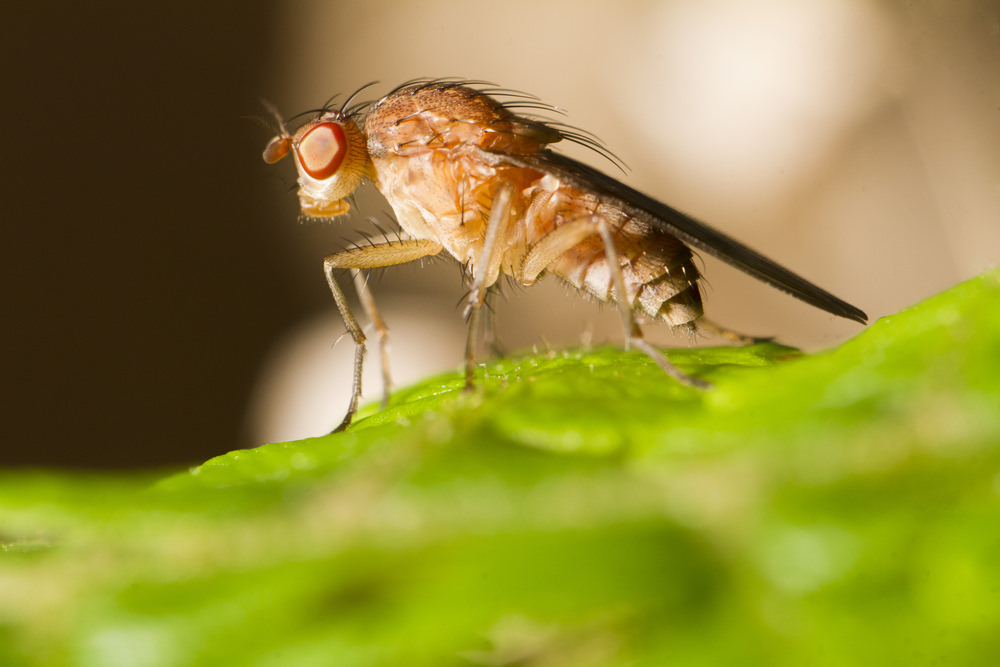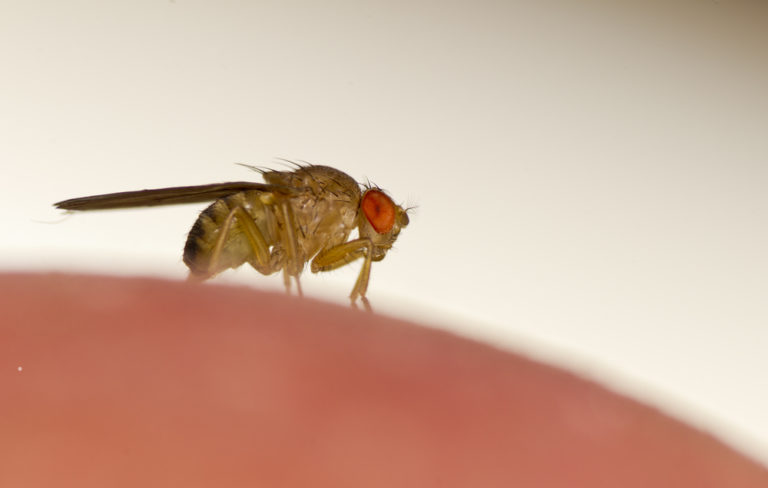Do Fruit Flies Bite?
You may have simply seen a rare fruit fly here and there around your house, or perhaps you fear an epidemic is on your hands, and now it’s a question of safety, could fruit flies actually bite?
While research says they don’t, many people say they do, and you might be one of them. There are many species of fruit flies, which can make things even more confusing. But besides the matter of biting, fruit flies are also feared for other dangerous reasons. To make things clearer, let us first start by defining fruit flies.
Top facts on whether fruit flies bite:
- Fruit flies can’t bite
- They can be mistaken for midges or filth flies, which do bite
- Fruit flies are attracted to fermenting fruits, not human skin or blood
- Even if they wanted to bite, fruit flies can’t because they have no teeth or stinger
What is The Species of Fruit Flies?
Fruit flies belong to the genus called Drosophila, and the scientific name of the common fruit flies is Drosophila melanogaster, while the Asian fruit fly is called Drosophila suzukii. Aside from being called fruit flies due to their affinity with fermented fruit, they’re also called vinegar flies. This is due to their attraction to vinegar, which is a by-product of fermenting fruit.
Out With It! Do Fruit Flies Bite or Not?
In short, the answer is no. Fruit flies don’t bite humans. Their attraction is solely focused on fermenting fruit and food particles. No offense to you, but they’re not interested. In fact, they don’t even have teeth or laceration tools to resemble anything similar to a bite.
If you’re annoyed by a small number of fruit flies, perhaps you could be comforted by the fact that their lifespan rarely lasts for more than 50 days.
Perhaps you’re sure that a fruit fly bit you before, and the confusion here is quite common. Whether you’ve been a firsthand victim yourself, or have been told by a friend that fruit flies bite, people mix up fruit flies with other, similar flies.
To erase all confusion, the appearance of a fruit fly differs from others. Think of a normal housefly, and then imagine it’s a mini version of that, totaling only an eighth-of-an-inch in length. Fruit flies are famous for their caramel brown color, and red eyes.
Is this what you’re seeing? If not, perhaps you’re confused with one of the below species that do bite.
Biting Midges
Also known as biting gnats, these tiny flies are more populous in warm weather, similar to fruit flies. They’re larger than fruit flies with a length ranging between 0.04 and 0.12 inches and should have a more greyish color versus the brownish color of fruit flies. Biting midges are more of a biting risk for animals rather than humans, though.
Filth Flies
These include stable flies, which, like mosquitos, bite for the blood of humans and animals. While you can expect a bit of pain from such a bite, they don’t pose a provable risk of transmitting diseases.
Fruit Flies Don’t Bite, But They Can Do This
Just because they don’t bite, it doesn’t mean that they’re harmless. Much like houseflies, fruit flies are quite dangerous in terms of carrying diseases. Their main purpose is to search for fermented fruits that contains bacteria. They can then spread the bacteria from one place to another.
The risk is quite low when it comes to carrying diseases, but research has proven it is possible. They are capable of carrying pathogenic bacteria and can spread it to you if they ever touch your skin.
Another risk of fruit flies is the consumption of their eggs. Female fruit flies can embed eggs on the surfaces of fruits. This is generally not a problem since the acids in your stomach are usually capable of mitigating the threat. Ingesting fruit flies hasn’t been proven to cause any illness, but washing exposed fruits before eating them is a safety precaution to take.

How Do Fruit Flies Spread this Fast?
Fruit flies take very little time to grow into their adult form. The process between the female laying the egg, to the adult fly growing up and becoming ready for mating takes only about 10–12 days.
This includes four days through which the fruit fly eggs grow into larvae, followed by another four days for pupation, in which the larvae transform into an adult fruit flies, and then two more days before the newly transformed fruit fly can mate.
The timeframe is very sensitive to temperature and is at its highest between 77 and 82 degrees Fahrenheit. Anything warmer or cooler than this range will significantly increase the fruit fly’s development time.
While adult fruit flies live for only about 40–50 days, this short time is quite sufficient for a prolific reproduction process. Since it takes around 10 days for eggs to become ready-for-mating fruit flies, this short lifespan allows female flies to lay anything between 750–1,500 eggs during their lifetime. This means that, as long as there’s food present in the area, a fruit fly infestation could prove quite sustainable.
How to Get Rid of Fruit Flies
There are a few easy and simple procedures you can do to prevent infestations:
- Keep any fruits or vegetables covered or inside a refrigerator, especially overripe ones
- Do not leave any open soda or beer bottles exposed
- Remove any garbage from your household regularly as they could contain any fermented or overripe fruits
If you happen to have a fruit fly infestation, you can either contact a capable exterminator to get the job done for you or try out this vinegar trap:
- Pour apple cider vinegar into a glass or cup and fill it to about an inch high
- Cover the vinegar container with a sealed plastic bag
- Cut off a corner of the plastic bag to make for a small hole
Conclusion
If you’re worried about fruit flies biting you, put your fears aside because it’s physically impossible — fruit flies don’t have teeth! They feed on fermenting fruit, not blood, so they have no business with humans. If you feel a fruit fly has bitten you, you’re likely to have mistaken it for a midge or something similar.

